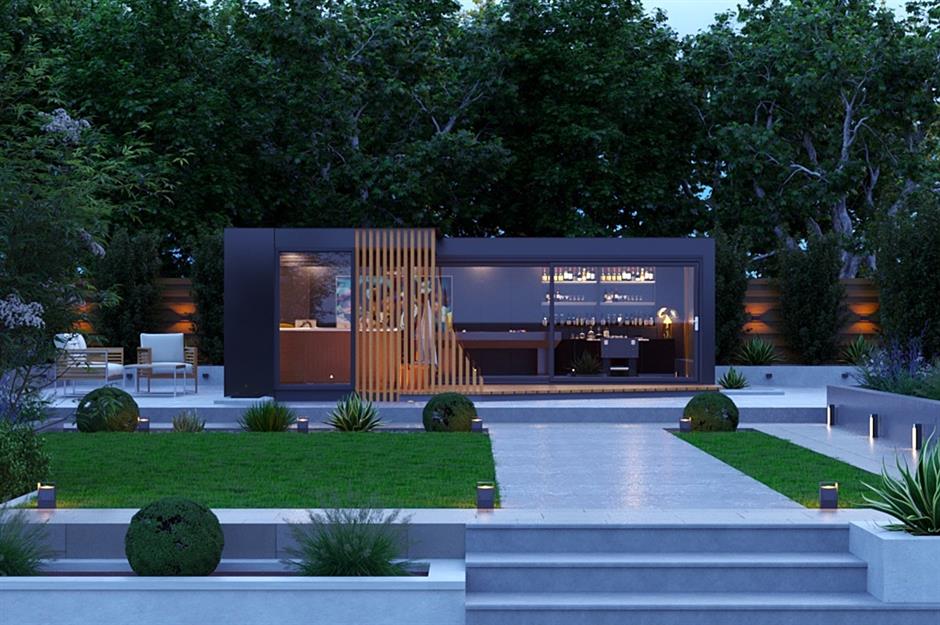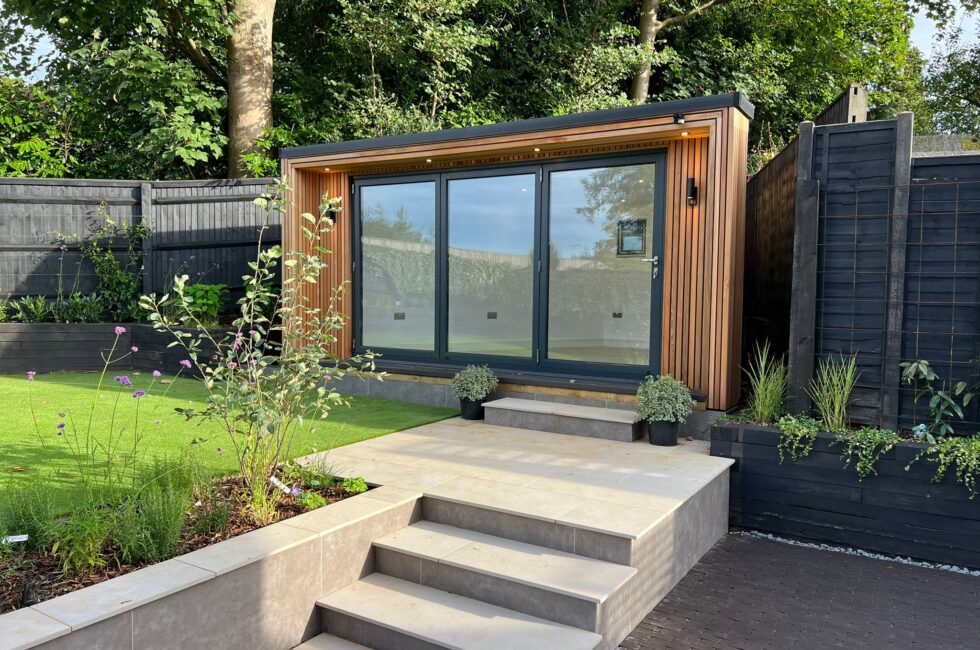Great Tips For Planning Permission For Garden Rooms
Wiki Article
What Planning Permissions Is Required For Garden Rooms Etc In Regards To Highways?
Highways issues, whether related to the construction of conservatories, garden offices, outhouses, or even extensions and gardens could have a major influence on the requirement for planning permission. Here are some key things to think about such as visibility, sightlines and other similar factors.
Planning permission is required when the new structure blocks the view of drivers coming into and leaving the property or affects sightlines at intersections or bends on the road. The planning authority will determine whether the building poses a danger to road safety.
Distance from the highway
Usually, structures built in close proximity to highways such as front garden rooms or extensions in close proximity to roads require planning approval. There are certain distance rules to ensure that the construction is not a hindrance to the safe operation of the highway.
Access and Egress:
Modifications to access points such as the construction of new roads or modifying existing ones to fit the new design are likely to require permission from the planner. The access point and the egress point must be safe to avoid disruption to traffic.
Parking:
If the new structure impacts existing parking spaces, or requires more parking the planning approval is required. The planning authority determines whether or not the development has enough parking and if it will not cause congestion in parking on streets.
Traffic Generation
Planning permission is needed for any development that is expected to increase traffic levels, such as a garden office used by a company with customers who visit. This would include a study of local traffic levels and road conditions.
Impact on Pedestrian Access
If the structure proposed is encroaching on pedestrian paths or pavements, planning permission is required. It is crucial to ensure that pedestrians can get to the area and remain secure.
Construction Impact on Highways
Planning permission could be needed if the effect of construction on roads is significant, such as temporary obstructions and heavy traffic. The planning authority may set conditions on construction in order to reduce disruption to roads.
Drainage and runoff from water
Another factor to consider is the impact of the construction on drainage and runoff water, especially how it impacts roads. The permission for planning will ensure that the proposed structure does not cause flooding or drainage issues that may cause problems for the road.
Street Furniture and Utilities
The construction is required to be approved if the construction could impact street furniture (e.g. lamp posts and signs), or underground utilities (e.g. electrical cables, water pipes). This will be handled by the planning authority in coordination with other agencies.
Highway Authority Guidelines
Local highway authorities will have their own guidelines and regulations regarding developments that are in close to highways. Planning permits allow for compliance with road safety regulations.
Disturbing and noise from traffic:
The new structure may cause more noise or traffic (e.g. an office in the garden that has deliveries and visits). Planning permission will be needed to mitigate any impact.
Accessibility to Public Transport
Permission is needed for developments that could impact accessibility to public transport, such as stations for trains or buses. The impact on public transport users and the integration with the transport system will be considered.
In conclusion, highway concerns are a major aspect in the approval process of conservatories, garden rooms or extension of the garden. The need to ensure that the proposed project doesn't negatively impact the safety of traffic flow, road safety, pedestrian access, and the overall infrastructure is vital. Contact the local planning authority and the highway authority in the early stage of the planning process to address these concerns. View the top rated garden room cedar cladding for more examples including garden room planning permission, garden room permitted development, garden rooms, garden office hertfordshire, best heater for log cabin, copyright outbuildings, garden rooms in St Albans, small garden office, outhouse builders, what size garden room without planning permission and more.

What Planning Permission Are You Required To Get For Garden Rooms Etc In The Context Of Listed Buildings?
There are more stringent guidelines and requirements when planning to build conservatories or garden rooms on the property of an historic building. These are the most crucial aspects to consider when planning permission.
Alongside the need for the planning approval, any alteration or extension within the boundaries of an historic building is subject to listed-building approval. The property's character and uniqueness can be affected by any changes.
Impact on Historic Character
Planning permission is required for any new or extension structure that might affect the design or style of a listed building or setting. This includes outbuildings and gardens rooms.
Materials and Design
The design and materials of the new structure have to be in keeping with the historical and architectural significance of the building that is listed. It might be required to utilize traditional materials or bespoke designs, which will require approval for planning.
Proximity to the listed building:
The effect of new construction near a heritage building is assessed to determine whether they detract from its character. If they do not impact the character of the building Planning permission is required to be obtained.
Size and Scale:
The dimensions and size of the conservatory, garden room, or extension must be proportionate and sympathetic to the existing building. Larger structures are more likely to need an in-depth evaluation and planning approval.
The location within the property:
The position of your new structure (whether it is in front, to the side, or at the rear of the structure) will determine whether you need planning permission. Visible or key locations which impact the building's appearance will require a closer examination.
Internal Changes
Even if it's an independent structure, any changes to the interior to a listed building (such the creation of new entry points) need the permission to plan and the listed-building permit.
Conservation Area Overlap
If the listed building is located in a conservation zone, additional restrictions will apply. To ensure compliance with the listed building regulations as well as conservation area regulations Planning permission is required.
The building's use:
Planning permission might be required dependent on the purpose for which the garden space or outbuilding is intended to be used for. Planning permission is required for activities that require a major change, such as residential accommodations or a commercial use.
Structural Impact:
Any construction that could alter the structural integrity a listed building must be accompanied by the permission to plan and the listed-building permit. This ensures that existing and new structures are able to be safely incorporated.
Local Authority Guidelines
Local authorities usually have guidelines for listed buildings which define the types of construction and modifications are permitted. Planning permission will ensure these guidelines are observed.
Professional Assessments:
Conservation professionals often need to conduct detailed evaluations of the proposed work to heritage-listed structures. These assessments are used to determine if modifications proposed are appropriate and also to back the application for planning approval.
To summarize, planning consent and listed building approval are almost always needed when making conservatories, garden spaces, outhouses, office buildings or extensions with a designated building. An early consultation with local experts on heritage and your planning authority is crucial to ensure that the regulations are met and the historic and architectural integrity of the property is preserved. Have a look at the most popular max height of garden room uk for more advice including armoured cable for garden room, how to lay decking on soil, do i need planning permission for a garden room with toilet, small garden office, garden rooms brookmans park, garden rooms brookmans park, 4m x 4m garden room, garden office electrics, insulated garden buildings, garden room planning permission and more.

What Planning Permission Is Required For Garden Rooms, Etc. With Regard To Location Restrictions?
If you are planning to construct a garden room, conservatory outhouse, garden office, or extension The restrictions on the area will determine if planning permission is required. Take note of these important criteria when determining the location of your building: Distance from borders
A structure that is located within 2 meters from the property's boundary cannot be more than 2.5 meters in height. If the height exceeds the limit, planning permission is required.
Front of the Property:
The construction of structures on the main elevation of the house (the front-facing side) generally require permission from the planning department, since permitted development rights do not typically allow for forward-facing extensions or structures.
The Property's Aspect
If the extension extends past the current wall, it will often require planning permission.
Rear of the property:
Extensions to the rear and garden rooms located at the back of the house are subject to height and size restrictions. If the development exceeds the permitted limits, a planning permit is required.
Designated Zones
In National Parks, World Heritage Sites and Areas of Outstanding Natural Beauty there are stricter rules. Any new construction, regardless of size, could require planning permission.
List Buildings
Properties that are listed buildings are subject to strict rules. Any construction or modification will require planning permission and listed building approval, regardless its site.
Green Belt Land:
In order to maintain open spaces, it's extremely difficult to construct on greenbelts. Green belt land is restricted to protect open space.
Flood Risk Areas
The new structure must not increase flooding risks in the event that the property is located in a flood risk zone. An assessment of flood risk as well as planning permission might be required.
Urban vs. Rural Settings:
Urban and rural areas have different rules. Rural homes are more flexible in their restrictions on the dimensions and placement of outbuildings. This varies greatly.
Highways and Public Rights of Way
If the structure is close to highways, roads, or rights of way for public use, planning permission could be needed to ensure that the structure doesn't block views and access, or compromise safety.
Shared Ownership or Leasehold
If the property is leased or part of an ownership sharing plan, it might require additional permits. Planning permission could be required based on local regulations.
Nearby to other structures:
It could be necessary to seek planning permission when the new structure is planned to be built near the existing buildings or structures, especially near neighbouring property. This will ensure that the structure or land that is adjacent to it is not negatively affected.
Always check with your local planning authority in order to receive a specific plan that is specific to your home, its location and circumstance. Local laws can have a significant influence on the regulations. It is important to follow all regulations in order to avoid legal or financial penalties. Have a look at the best garden office electrics for more info including copyright garden office, garden room heater, garden room conservatory, out house, outhouse garden rooms, garden buildings , garden office, composite garden rooms, outhouse builders, garden rooms near me and more.
